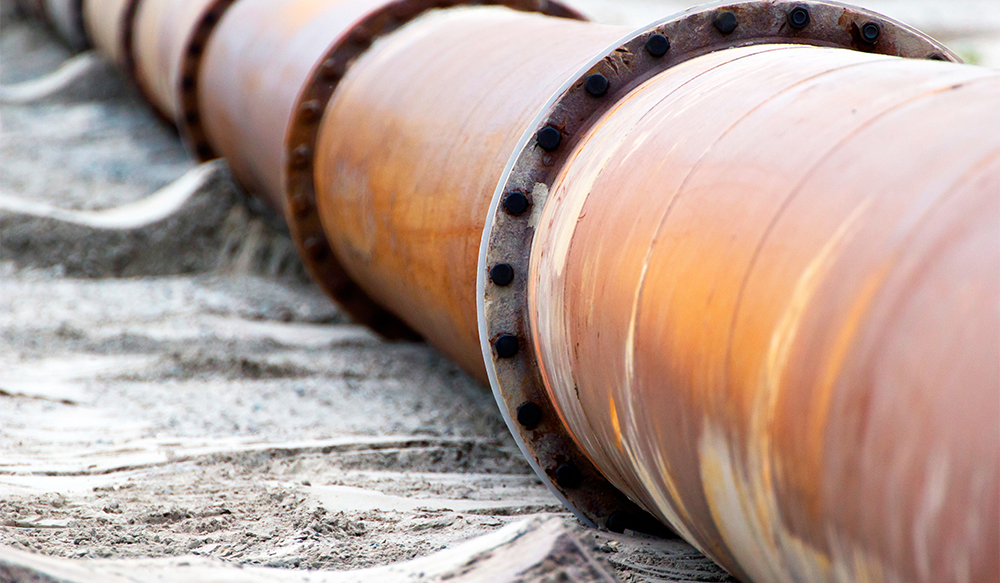
What invisible force has disfigured the Statue of Liberty, caused lights to fall from tunnel ceilings, and destroyed U.S. Naval Ships from the inside out? Give up? The answer is galvanic corrosion, and it’s a scary factor for anyone who works with metal.
Luckily, the more you know about this sneaky corruptor, the easier it is to protect your pipes. And we have the details you need to know. Read on for this silent destroyer’s four must-know stats.
What Is Galvanic Corrosion?
When dissimilar metals come into contact with one another, it can kick off an electrochemical reaction. During this reaction, one metal causes another metal to break down. This process is called galvanic corrosion.
How It Works
In general, you need three things to kick off galvanic corrosion: a cathode (one metal), an anode (a second metal), and an electrolyte.
When you’re dealing with dissimilar metals, the cathode is the “giver.” It’s a more basic metal that’s eager to give away its electrons. That means the cathode is—you guessed it—the “taker.” It’s a more noble metal that likes to pull electrons from nearby sources.
What about the electrolyte? This is a substance—like water, microbes, or grime—that jump-starts the whole process.
Which Metals Get Along, and Which Don’t?
Galvanic corrosion happens when metals with different electrochemical properties are paired up. This usually means that a more noble metal has been paired with a basic metal.
If an overly noble metal is paired up with a basic metal, it will steal the base metal’s electrons. The result is a rusty, weakened piece of metal.
How do you know which metal pairings increase galvanic corrosion and which metal pairings are safe? Look to the anodic index.
The anodic index is a list of each type of metal’s electrochemical voltage when it’s paired up with gold. Gold serves as the baseline, and so its index value is zero.
At the same time, iron has a value of -0.85. As a general rule of thumb, you don’t want your metal pairing to have a gap of more than 0.15 between their index values. Generally, the bigger the gap, the more corrosion there will be.
For example, if you pair up copper (−0.35) with plain carbon steel (−0.85), the difference is 0.50, which means you’re probably going to have problems. On the other hand, if you team up copper (−0.35) with bronze (-0.40), the voltage difference is just 0.05. That means copper and bronze work well together.
With those basics in mind, here are four galvanic corrosion statistics you should know:
Galvanic Corrosion Statistics
- Salty, humid ocean air causes metal to corrode 10 times faster than air with normal salt levels. This means that environment matters. Electrolyte-heavy air with salt or moisture can kick galvanic corrosion into hyperdrive.
- According to the National Association of Corrosion Engineers (NACE), corrosion causes $2.5 trillion worth of global damage. This isn’t all a factor of galvanic corrosion alone, but pairing up the wrong metals plays a heavy role in these massive costs.
- Approximately 85 percent of all steel produced is carbon steel. This means that the majority of steel is susceptible to oxidation and galvanic corrosion.
- The corrosion rate of steel in aggressive soil can be 100 times as corrosive as it is in favorable conditions. Estimates suggest the corrosion rate of steel in soil ranges from 0.2 microns per year in mild soil to 20 microns per year in aggressive soil. The bottom line? You should always know what your pipes are exposed to and protect them from the elements.
How to Stop Galvanic Corrosion
As scary as these stats are, there are ways to protect your pipes from this destructive menace. First, pay attention to which metals you’re pairing up. If the metals don’t get along, consider a different combination.
What if you don’t have other options? There are still simple solutions for protecting pipes. You can add galvanization to metal or use protective coatings. You can also use isolators or physical barriers to keep hazardous metals from connecting.
Finally, you can reduce galvanic corrosion by keeping damaging electrolytes at bay. This may mean using sealants, waterproofing, or drainage systems to shrug off moisture or other corrosion aids.
Arm Yourself with Information
The key to preventing galvanic corrosion and broader destruction within your piping systems is to take a proactive approach. Learn how when you download The Expert's Guide to Hot-Dip Galvanization.






